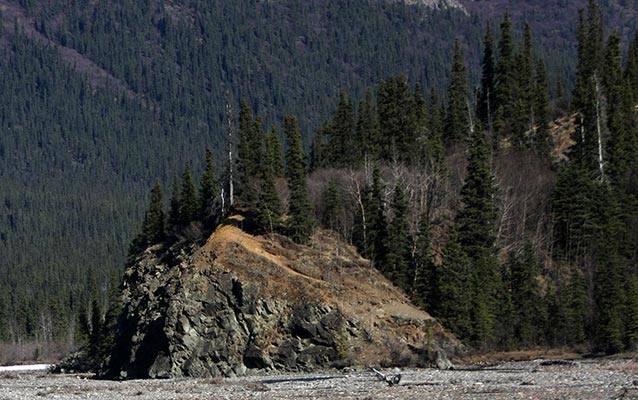Last updated: November 17, 2023
Lesson Plan
Forest Exploration

- Grade Level:
- Upper Elementary: Third Grade through Fifth Grade
- Subject:
- Science
- Lesson Duration:
- 30 Minutes
- State Standards:
- Alaska State Standards
Science: A12, 14, 15; B1, 2, 3; D1, 2;
Essential Question
How does observation help us understand wildlife and it's habitat?
Objective
Using discovery and observation, students will better understand the role of little creatures as they relate to their habitat and other living things.
Background
Explain to the sleuths that they are going to walk to a forest habitat. On the way to the forest habitat:
- Have them look for evidence of little creatures above their heads as they walk along. (Some examples are: birds, squirrels, squirrel nests, bird nests, homes in trees, etc.)
- Upon arrival at the habitat study area, gather the group together and share some of the things they found along the way.
Preparation
Review Procedure details.
Procedure
Tell the sleuths that they are in the forest habitat.
- Ask them what makes a forest different from a field? (Trees, temperature, amount of light, moisture, etc.)
- Ask the detectives to give examples of little creatures that might inhabit that particular habitat. (Forest: spiders, mice, squirrels, insects, birds, etc.)
- Set comfortable boundaries within the habitat area that will provide the sleuths with individual exploring room.
- Show them the field guides and other resource sheets available to the whole group for ID purposes.
- Let them go to work in the habitat! The students may carefully collect smaller critters (ants, beetles, insects,etc.) in the bug boxes. Other creatures like butterflies, mice, moths, etc., can be collected in the jars. However, some of the best learning to be done about little creatures is to observe them in their habitat doing what they do best.
- During the exploration go from group to group answering questions and reinforcing excitement and curiosity about what they are doing.
- When sleuths have explored and found a little creature that they are very excited about, give them a case study sheet.
Assessment Materials
Pass all the creatures around so that everyone can look at each one.
- Ask several detectives to explain one or more of their creature case studies to the rest of the group using the case study sheets as a format.
- Ask each sleuth how they think these creatures affect, or what relationship they have to their environment, the park, and people. (e.g., are they harmful? Are they helpful? Are they important to us? To others? Why?)
- As a group put all of the creatures into several groups according to their individual similarities and differences. Have each sleuth write the group of his or her creature on their case study sheet. Tell the sleuths to carefully return their creatures to where they were found. Found alive, return alive!
Additional Resources
This lesson is part of our "Pathways to Discovery" unit. The individual lessons can be done individually or as a larger unit of learning. They encourage the development of a student’s awareness and appreciation of the natural world and people’s relationship and role as a part of that natural world.
The lessons are a series of shorter activities that have been blended together under a specific theme with the intent that the activities will be coordinated with units in the existing school curriculum and texts. The materials are organized by grade level, but can actually be adapted for use at any grade level. Check out the Pathways to Discovery lessons.
For more information about this lesson plan, please contact the park Education Specialist by email at wrst_info@nps.gov
